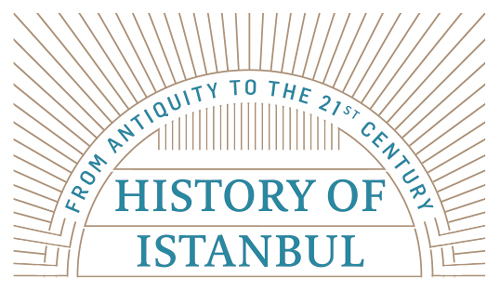Assemblies (meclis: i.e., social gatherings) are one of the ancient institutions of cultural history; indeed, in Ancient Greece, most debates between philosophers took place in assemblies. Looking at the most recent past shows us that assemblies have a long history as part of Europe, as well as in the Ottoman world.
Assemblies where thinkers and men of arts conversed with one another were an important institution of traditional culture. During ages in which there were insufficiently developed means of mass communication, assemblies enabled men of art and opinion-makers to become acquainted with one another and exchange emotion and thought. The assembly is an institution of oral culture, but it has survived in societies and social circles that have an ingrained written culture, thus allowing them to hold onto their oral culture. Such circles continued to play a major role in forming public opinion in the world of art and ideas until the twentieth century, when mass communication devices underwent groundbreaking improvements.
In the Ottoman world, divan poets would meet one another in assemblies. Upon examination of the memoirs of the post-Tanzīmat period it is possible to see that assemblies had, so to speak, gained an institutional identity based around literary circles. However, musical assemblies fulfilled a special function that was distinct from literary assemblies.
Istanbul was the heart of Ottoman music, which was divided into three major institutions: the Ottoman palace, the tekke (dervish lodge) and musical assemblies. It is possible to claim that musical assemblies are as ancient as the tradition of Ottoman music itself. Having survived for centuries as an important musical institution, musical assemblies survived the foundation of the Republic; some of them continued to function until the third quarter of the twentieth century.
Musical gatherings were special events at which musicians gathered, particularly in the house or mansion of a music master or a music lover, or perhaps just anywhere, and gave a concert. However, these gatherings could be attended only by an elect group of invitees.
In the past, environments in which one could listen to music, and particularly the refined Ottoman classical music, were limited in number. These musical assemblies provided an exclusive opportunity for promising amateurs who eschewed what can be referred to as “music of the market”. The raison d’etre of these gatherings was, of course, the music itself. These assemblies were not simple venues where the participants merely listened to music. At house gatherings, a great variety of conversations occurred; these were not only about music. Thus, musicians were introduced to members of cultural circles who had great fondness for the arts. Young people with enthusiasm for music were also sometimes invited to these assemblies. Through these assemblies, youngsters had an opportunity to listen to, recognize, learn and perform the best music; at the same time they could meet famous musicians.
Ottoman music was “chamber music”. The participants would gather in a place that was generally the size of an ordinary room. İncesaz (music performed by a small ensemble of instrumentalists) music is not a type of music suitable for a concert hall. The sounds of the ney, the tambour and the oud cannot be heard well in a venue as large as a concert hall. And an ensemble made up of a few singers does not resonate well in a cavernous hall either. The instruments of fasıl (suite) music are appreciated for their particular timbres and sound hues. There were no microphones in the past, thus music was not performed in large venues. Since a microphone, while increasing the volume, distorts the original sound of an instrument or voice, it is still a matter of debate among musical circles today whether it should be used or not.
As ensemble music is music that is performed in small places, the music performed in palaces and dervish lodges was also, in this sense, a kind of assembly music. The most prominent quality of assembly music particular to small spaces was that it addresses a small but distinguished audience. Additionally, the musicians and listeners would be well-acquainted with one another.
Musical gatherings are of two kinds: the assemblies gathered in the palace that addressed the sultan and his retinue and the gatherings that were organized outside the palace in mansions and houses. The performers in both types of assemblies would gain further musical experience and knowledge playing side by side with masters. The pieces learned at the gatherings were taught during the meşk (one-on-one learning) sessions. Indeed, the assembly meant the presentation of well-learned pieces taught at meşk sessions to a group of listeners. The houses of the masters who gave music lessons to young people or the places where these lessons took place were each a workshop (meşk-hāne). An assembly would be convened on concert days, usually in these workshops. There were also assemblies attended by well-trained performers but which were not connected to any teaching activity. Musical societies opened first at the beginning of the twentieth century after the Second Meşrutiyet (1908), and the numbers grew over time; it is possible to regard these as an expanded and institutionalized form of the old private music workshops.
Assemblies held in the post-Tanzīmat period up until the last quarter of the twentieth century made their way into memoirs with the participation of the following musicians and music lovers. Necīb Pasha (1883), Yanyalı Mustafa Pasha (1904), who sponsored Tanburi Cemīl (1916), Müşir Şākir Pasha (1919), Ahmed Midhat Efendi (1912), Enderūnī Ali Bey (1897), Bolāhenk Nūri Bey (1910), Musullu Hāfız Osman (1920), Ali Gālip Türkkan (1949), Ahmet Nūri Canaydın, Dr. Rāsim Ferit Talay (1965), Fehmi Tokay (1959), Abdülkādir Karamürsel (1948), Ekrem Karadeniz (1948), Süleyman Erguner, Ūdī Marko Çolakoğlu (1957), Ahmet Mükerrem Akıncı (1940), Yektā Akıncı (1980) and Zeki Toros.
Some of the musical assemblies of the twentieth century have left their traces on our memory. Of these, the wooden house of the ney player Hakkı Süha Gezgin (d. 1963) at Number 110 Şair Nedim Street in Beşiktaş is of particular importance in that it perpetuated an ancient tradition by functioning both as a workshop and a musical assembly. The musicians who gathered in this house would be taught by Dr. Selāhattin Tanur, the tambour player, a different fasil every month, and they would play and sing the learned fasil in the same month at a gathering of musicians and music lovers. The assembly in the house of the historian İbnü’l-Emīn Mahmūd Kemāl İnal (1957) was a very distinguished one in terms of bringing together musicians, historians, university professors and an elite group of intellectuals. At the assemblies held in his mansion located in the Bakırcılar quarter of Beyazıt, first a fasil would be performed, and then the participants would have conversations about music, history and literature. What İnal did was to continue the assembly of his father Mehmed Emīn Pasha (1881), a relative and the mühürdār (private secretary) of Yūsuf Kâmil Pasha (1876). Given that Tanbūrī Cemīl and Hacı Ᾱrif Bey were amongst the musicians who attended this assembly, it is possible to assume that it continued for about three quarters of a century. At the assembly held in the house of Yektā Akıncı, the participants worked on a very elite group of pieces. The assemblies of the oud player Cahid Gözkan (1999), held in his Cerrahpaşa and Çiftehavuzlar houses from 1950 until his death, lasted for a long time and had a great impact in that they brought together musicians from three consecutive generations. At the assemblies held by Necmettin Hakkı İzmirli - an amateur violinist and an internal medicine specialist - in his house first in Taksim and then in Florya over 20 years (1951-1971), many celebrated radio artists of the time played and sang. The assemblies held from the 1940s until 1975 in the Maçka and Yeniköy houses of Neyyire [Nergis] İpekçi (1975), who made records with her sister Lebibe [Lale] İhsan Sezen (1971), regularly brought together renowned performers of the time.
It is possible to speak of many other assemblies of various sizes apart from those mentioned above. Musical assemblies have left their marks due to their regularity and continuity. Many well-known musicians from the recent past sang, played, improved their musical abilities and acquired culture at these assemblies.





